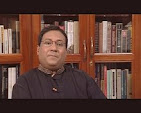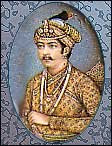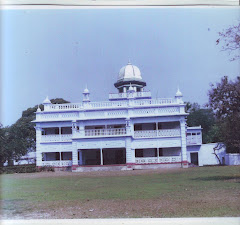Abhijit Vinayak Banerjee (right) is Ford Foundation International Professor of Economics at MIT writes about the 2006 Nobel laureate for peace and his eminent cultural compatriot Dr. Muhammad Yunus(left).
Source: http://www.exectimes.com/content/nov06/cov04.asp


Source: http://www.exectimes.com/content/nov06/cov04.asp


The Nobel Peace Prize is often a prize for courage. When we think of the prize we think of Andrei Sakharov in banishment, or Nelson Mandela in his South African prison. This year's prize is for a different kind of bravery, the bravery it takes to believe in an idea and to pursue it. Dr. Yunus literally put his money, as the American expression goes, where his mouth is. In 1976, he lent 27 of his own dollars (which must have been a significant part of his professor's salary then) to 42 poor borrowers.
It probably took even more intellectual courage, and the clarity he is famous for, to take the next step-to draw the right lesson from the fact that they all paid it back. Not the lesson that a more vain man might have drawn, that they were responding to his unexpected munificence-of course they were-but the much more important fact, that even the very poor can take a loan and repay it, when it makes sense for them to do so. You can lend to the poor, just like you can lend to any one else, and like everyone else, how easily you can get them to pay it back depends, in part, on their incentives. The promise of a future loan does make it easier to collect, especially with the poor who often have no one else who would lend to them. But you also need to do your due diligence: make sure that the borrowers are really in it for the long-haul, keep an eye on them to make sure that things are not going too far wrong, prod them a little when they are late. Like any other banker.
What makes lending to the poor harder is simply the fact that they borrow so little-a loan of a few thousand Takas is a sizeable loan for them. In part this is due to their own diffidence (what would I do with so much money?), but it is also because lenders worry about how someone would react if he were handed much more money than he has ever had. Would she know how to use it responsibly? Or, would it be just too tempting to take and run?
The trouble is, even though they borrow very little, much of the work the lender has to do to be able to lend to them - the so-called transactions costs - finding out where they live, what they do, what business they are in, collecting the money, etc-is not that different from what is involved in making a bigger loan. This is why most lenders do not want to lend to them, and when they do lend, the interest rate they charge tends to be very high.
Yunus' great practical insight was that the challenge was to get the transactions costs down. This he made his life's work. This is why Grameen has the weekly meetings with multiple groups (so that a single loan officer can collect from many people at the same time), the group loans (so that all the members have a stake in making sure that the others pay), the attempts to standardize the loans (eliminates the need to make a lot of calculations). All the group activities, like the chanting of the four principles, feed into this as well (though they may also be important for other reasons): By helping to build a Grameen identity, they help to mitigate the usual adversarial relationship between the borrower and the lender.
None of this was obvious in 1976. I am not quite of the Dr. Yunus' generation, but I am old enough to remember what most economists were talking about then: It was socialism versus capitalism, the inevitability of the revolution, the miracle of the market, big questions that could be endlessly debated. To walk away from all that and to bury yourself in the nitty-gritty details of how best to lend a few Taka to a few desperately poor women, must have taken enormous courage. When everyone else was busy changing the system, what he was trying to do must have felt utterly trivial at times. It must have taken a lot to keep going. We are grateful that he did.
The early efforts, as he describes in his book, did not always go well. Sometimes the group size was too large; sometimes the loan size was wrong. It took a lot of experimentation, and willingness to learn from mistakes to get there. But they got there. The Grameen Bank now charges a maximum of 10 percent per year, conventionally calculated, compared to interest rates of 50% or more that money-lenders and other private bankers charge the poor.
The size of that gap, reflects in part the benefits of even small reductions in transactions cost: One insight from the recent work on the economic theory is that reductions in transactions costs come with what economists call a multiplier-one fall in transactions costs creates another. This is because the initial fall in transactions cost made it possible for Grameen to cut its interest rates; but a lower interest rate makes it less likely that a borrower would want to default, which makes life easier for the lender and reduces transactions costs further, which allows Grameen to cut the interest rate more and so on. This is probably one reason why Grameen can offer loans that are so much cheaper than the market.
The other reason is of course, subsidies. Grameen gets a substantial amount of subsidies from donors, which it can pass it on to its borrowers in the form of an interest rate that is below what it costs to deliver the loan. From the point of view of the relation between the borrower and lender, it does not matter whether the cut in the interest rate comes from a lowered transactions cost or a subsidy. Both set off the multiplier, so that the fall in the interest rate can be much bigger than what one would have otherwise anticipated (say based on the size of the subsidy).
For this reason, subsidies given to micro-credit organizations can be a very effective way of helping the poor, as long as it does not undermine the professionalism of the organization that is doing the lending. This is why Dr. Yunus has always resisted the almost religious opposition to all subsidies one often comes across in the Microfinance community, especially outside South Asia. The argument that is usually made is that the reliance on subsidies will limit the ability of these organizations to grow, which might have been true had it not been for Dr. Yunus' almost magical ability to get the world to see micro-credit as he sees it.
Indeed the danger at this point is that the world may be all too persuaded. Donors love it, and expect it to do miracles; I have even heard how it will help with AIDS in Africa (it might, because anything that brings hope might help, but it hardly seems an open and shut case). Yet we still do not have a scientific evaluation of the impact of micro-credit even on simple outcomes like family earnings-the early attempts to do impact evaluations have had obvious flaws, and together fall well short of a ringing endorsement. Several evaluations that should be much more credible are under way now, but it will, be some years before we start sorting out real sense of how what micro-credit can and cannot do. In the meanwhile all we really know is that it has logic in its favor, and the felt experience of many honest and clear-sighted men like Dr. Yunus.
Dr. Yunus knows the dangers of inflated expectations. This summer, when we were fortunate enough to spend a couple of hours listening to him in his office in Dhaka, he talked animatedly about the many things that still needed to be done: Bigger loans that allow businesses to grow, ways to help talented children of the poor to go college, something to help those who are too poor even to get micro-credit, and many others. Some of those have been launched already-the rest are on the anvil. They are experiments, he said-the search for better answers continues. A brave man with the will to keep trying: congratulations to him.




No comments:
Post a Comment